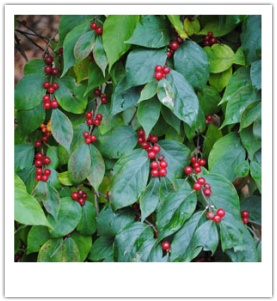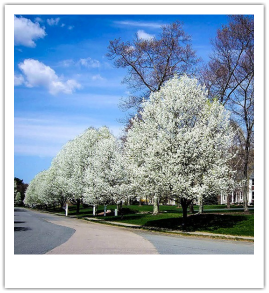 Fall is one of the best times of year to distinguish between what is a native plant and what is an invasive plant in our community. Our native trees and shrubs have now turned color and are in the process of losing their leaves. What you see as still green is most likely an invasive species of Bush Honeysuckle or Callery (flowering) Pear. Starting now and for the next week or two, please make time to eradicate these nuisance plants in our backyard or neighborhood! This article provides more information about the plants and how to get rid of them. An invasive species is a plant that did not originate in the area and whose introduction to the area has caused economic, environmental, or human health harm according to the US Forest Service. Among others, Bush Honeysuckle and Callery Pear are two plants that have wreaked havoc in our community. Bush Honeysuckle (pictured right, photo by US Forest Service) are shrubs that have invaded the under-story of forests and have populated our stream and river corridors. This green-leafed shrub produces white, pink, or red flowers in the spring and red or orange berries in the fall. The plant is one of the first to green in the spring and is one of the last to change color and drop leaves in the fall. Bush honeysuckle can rapidly invade, overtake, and crowd-out native plants - even releasing a toxic chemical that prevents other plants from growing around it. The root structure is extremely shallow and poor, providing almost no benefit for stream-bank stabilization and erosion control. Also, the berries do not provide an adequate food source, lacking essential nutrients for birds and other wildlife. Read more about Bush Honeysuckle and how to manage them below:
There are many different ways to remove Bush Honeysuckle. The Ohio Invasive Plant County put together descriptions of 32 methods of how it can be done. Pick the one that is right for you!
 Callery Pear (pictured right, photo by The Tree Center) is a very popular urban tree in the Midwest. The original cultivars of Callery Pear were unable to reproduce and were very tough trees. They became popular for their beautiful white flowers in the spring and their ability to survive in harsh urban conditions. Unfortunately, these trees cross-pollinated with other pear species and have spread into the countryside. Not only are these trees over-populating, but many have trouble with branch breakage which can be dangerous in an urban area or along a street. Read more about the Callery Pear and how to manage them below:
Please give us a call here at the District if you have any questions about the invasive plants on your property and how best to get rid of them.
3 Comments
|
Details
Warren County SWCD Staff BlogA blog to keep you informed on all the latest news at Warren County SWCD and in the conservation world. Archives
May 2024
Categories
All
|
||||||||||||||||||
|
|
Contact:PHONE: (513) 695 - 1337
EMAIL: [email protected] HOURS: Monday - Friday 7:30am - 4:00pm (except holidays) Connect:Warren County Soil & Water Conservation District Copyright © 2016
Warren SWCD Privacy Notice. Emails are serviced by Constant Contact. Constant Contact's Privacy Notice. |
